Atlantic Monthly Contributors's Blog, page 170
May 10, 2016
What Democratic Landslide?
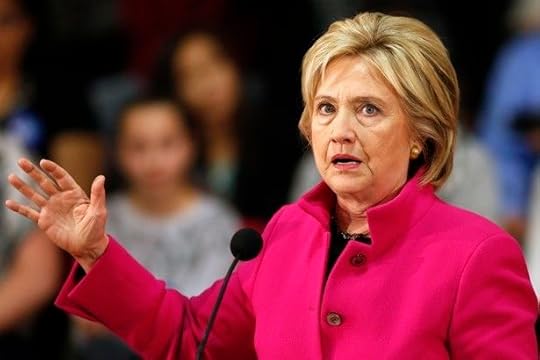
Warning: Candidates in this election may be closer than they appear.
To listen to the handwringing from despondent Republicans and the self-assurance from exultant Democrats over the last week, a Hillary Clinton landslide defeat of Donald Trump in November seemed a fait accompli. On Tuesday morning, however, the release of a group of polls put a damper on that forecast—at least for a few hours until the next ones come out.
The swing-state surveys from Quinnipiac University and a national snapshot from Public Policy Polling, a left-leaning firm, show a surprisingly close general-election race. The PPP survey found Clinton leading Trump by just four points nationally, 42 percent to 38 percent, while Quinnipiac found the two essentially tied in Florida, Pennsylvania, and Ohio. Trump edged Clinton by four points in the Buckeye State, and Clinton led him by a point in Florida and Pennsylvania. As with any poll taken six months before the election, these require a couple grains of salt, and in the case of Quinnipiac, perhaps a few more. Other political forecasters pointed out that its sample of voters in the three states was more white than in 2012 exit polls, while the electorate is expected to be similar in 2016 if not more diverse than four years ago. A sample with more white voters would favor Republicans.
Still, both sets of data point to a tighter contest than other recent polls and far closer than the congealing conventional wisdom would suggest. A CNN/ORC national survey released last week gave Clinton a 13-point advantage, and the RealClearPolitics average has her up by more than six points. Polls that show Clinton leading Trump by nine points in North Carolina and down by just one in traditionally Republican Georgia contributed to the impression that the campaign was over before it started.
Polls across the board show that both Clinton and Trump are historically unpopular for major-party nominees, and Clinton’s advantage has come from data finding that voters like Trump less than her. Republicans also appear far more divided than Democrats, and the refusal of GOP leaders like House Speaker Paul Ryan to embrace Trump would seem to undercut his ability to unify the party against Clinton.
Or maybe not.
The key to the PPP result is that just as rank-and-file Republicans have bucked the establishment’s choices for the last year, they may be reconciling themselves to Trump’s nomination faster than their leadership, as well. Trump led Clinton 78 percent to 7 percent among Republicans, and nearly three-quarters of GOP respondents said they were comfortable with him as their standard-bearer. “Although much has been made of disunity in the GOP, it is actually just as unified behind Trump as the Democrats are behind Clinton,” PPP’s Tom Jensen wrote in his analysis. The PPP survey included minor-party candidates Gary Johnson of the Libertarian Party and Jill Stein of the Green Party. When they were excluded, Clinton’s lead grew to six points—in line with the national polling average.
The biggest warning sign for Clinton is that as toxic as Trump has proven for women and minorities, Clinton herself is nearly as disliked by white men. In Florida, just 25 percent of white men went for Clinton. Bernie Sanders continues to fare better overall against Trump nationally and in Ohio and Pennsylvania, despite his losses to Clinton in the Democratic primaries there. In the PPP poll, a “generic” Democrat performed better against a generic Republican than Clinton did against Trump.
What, if anything, do these polls say about the race? The Quinnipiac surveys could be outliers, or they could be capturing an electorate that skews older and whiter than the voters who will show up in November. Or they could be showing a Trump bump in the days after his last rivals dropped out of the GOP race. The Democrats’ structural advantage remains—but so does the disadvantage of having an unpopular candidate atop the party’s ticket.
If you had to pick, you’d still rather be Clinton heading toward the fall. Just don’t assume a landslide quite yet.

MVP Stephen Curry
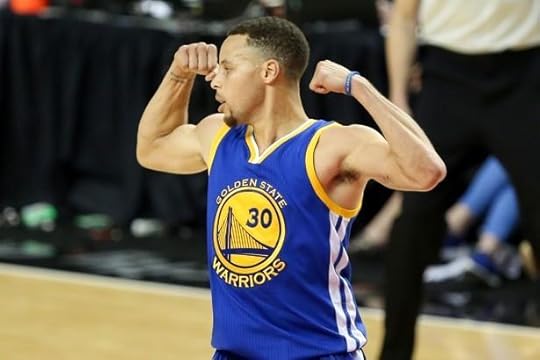
Stephen Curry of the Golden State Warriors on Tuesday became the first player in NBA history to be unanimously awarded the Most Valuable Player. This is the second consecutive year he’s won the award.
:
Curry has been an overwhelming favorite to repeat as league MVP since the Warriors’ record-setting start to the season, when they went 24-0—surpassing the previous record for best start to a season by nine wins—en route to a 73-9 mark that eclipsed the 1995-96 Chicago Bulls’ 72-10 record as the winningest single season in NBA history.
ESPN’s J.A. Adande reports he received all 1,310 votes for the award. Both Shaquille O’Neal in 2000 and LeBron James in 2013 fell one vote shy of winning the award unanimously.
Curry returned to the court on Monday night after being sidelined with a knee injury for a few weeks, scoring 17 points in an overtime win against the Portland Trailblazers, an NBA record for most points scored in overtime both in the regular season and the playoffs. The Warriors lead the Trailblazers 3-1 in the Western Conference Semifinals.

May 9, 2016
The Next President of the Philippines
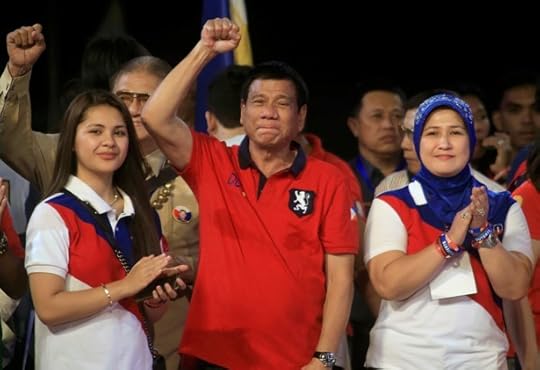
Voters in the Philippines all but elected a new president on Monday, a tough-talking mayor who transformed a southern city with a populist combination of controversial tactics and a deft touch.
With about 90 percent of the vote counted, Davao Mayor Rodrigo Dutrete had about 39 percent of the vote. His nearest rival, Manuel Roxas, the scion of a political dynasty, had 23 percent.
Duterte, a 71-year-old prone to explitive-laced rants on the campaign stump, was swept into office on a primarily law-and-order platform. During his 22 years as the mayor of Davao, a city of 1.4 million in the southern part of the country, Duterte oversaw a dramatic decrease in crime. His public life has been shaped by the violence that plagued his city, making it the murder capital of the Philippines when he first took office in 1988. Some dubbed Davao the “Nicaragua of Asia,” because of clashes between communist rebels and state security forces.
Today, the city on Mindanao island is celebrated as one of the safest in the Philippines. Even as Muslim militants connected to al-Qaeda terrorize other parts of the island, Davao remains “an oasis of peace in the middle of the Philippines’ lush center of chaos,” Time magazine described in a 2002 profile of Duterte.
“The only reason there is peace and order in Davao is because of me,” he told Time, saying he personally oversaw policing in his tenure by “thrashing” drunken cops, while also giving officers groceries as an incentive not to accept bribes. He said he personally told rebel groups he would kill them if they came into the city, and ordered his officers to kill people who resisted arrest.
Duterte would patrol the city on a motorcycle or undercover as a taxi driver. He also set up closed-circuit television cameras across Davao, banned the sale of liquor from 1 a.m. until 8 a.m., and implemented strict speed limits.
Time also wrote:
By the early 1990s, the threat within Davao from communist rebels and Muslim guerrillas had faded. Duterte’s vigilance had not. Urchins caught picking pockets have got beatings with a belt or a cow’s tail from the mayor himself, often in City Hall. Rich kids who hot-rodded down the city streets were warned that they’d be paraded naked around town. And throughout, he let it be known that he would never relent in his fight against rapists, petty thieves and particularly drug pushers. “If you sell drugs to destroy other people’s lives,” he threatened, “I can be brutal.”
That brutality at times meant using so-called “death squads,” extrajudicial groups that have allegedly killed thousands of people during Duterte’s tenure. In a 2009 report, the Human Rights Watch said that most victims of the killings are alleged drug dealers, petty criminals, and street children who may have connections to gangs.
Duterte proudly acknowledges helping kill 1,700 criminals through these groups. “How do you think I did it?” he said in a speech last May. “How did I reach that title among the world’s safest cities? Kill them all.”
Even on the campaign trail, he said he would dump the bodies of criminals in Manila Bay if he were elected president, promising to end crime in the country in six months by killing up to 100,000 more criminals. “All of you who are into drugs, you sons of bitches, I will really kill you,” he said this month. “I have no patience, I have no middle ground, either you kill me or I will kill you idiots.”
Duterte, who was elected seven times as Davao mayor, is a man of apparent contradictions. While he has run almost entirely a law-and-order campaign, a political opponent accused him of not declaring $51 million, allegedly accumulated from the salaries of 11,000 government workers that do not exist. He has been criticized heavily on the campaign trail for kissing women and being a womanizer, yet he has been a consistent advocate for women’s rights while he was mayor. He’s joked about the rape and murder of an Australian missionary in 1988 in his city, but he also has said he was sexually abused by a priest when he was younger.
And while his no-tolerance policies on crime and controversial public statements would suggest otherwise, during his time as mayor he helped institute several social policies that were progressive firsts in the Philippines. Davao was the first city to ban smoking in public (Duterte once forced a tourist to eat a cigarette butt for refusing to follow the ban). It was also the first city to create a 9-1-1 phone line and call center that worked effectively.
In 2012, he helped pass an anti-discrimination law to expand LGBT rights in a widely Catholic and socially conservative country. During this time as mayor, he would also send food to Muslim families during Ramadan, the Muslim holy month.
Even as this election was a race of soundbites and insults, most especially surrounding Duterte’s bravado, as president he will have to deal with several pressing issues facing the Philippines, including increasing tensions with China over territorial claims in the South China Sea. Duterte’s solution: He has promised to take a jet ski out to many of those contested islands and personally face off against the Chinese. The Philippines also faces high levels of poverty despite its impressive recent economic growth, and he faces the future of the country’s military cooperation with the United States.
President Benigno Aquino, who had campaigned against Duterte, is barred from seeking a second term by term limits. Presidents of the country of 100 million are limited to one, six-year term. However, on the campaign trail, Duterte suggested he might abolish the country’s legislature if he were elected president, which have led some to fear the return of a military dictatorship. It doesn’t help that his vice presidential running mate is the son of the country’s late dictator, Ferdinand Marcos, who ruled for two decades until his ouster in 1986.
Dutrete was gracious in victory.
“It’s with humility, extreme humility,” he told AFP, “that I accept this, the mandate of the people.”

'State-Sponsored Discrimination': Loretta Lynch Takes on North Carolina's Bathroom Bill
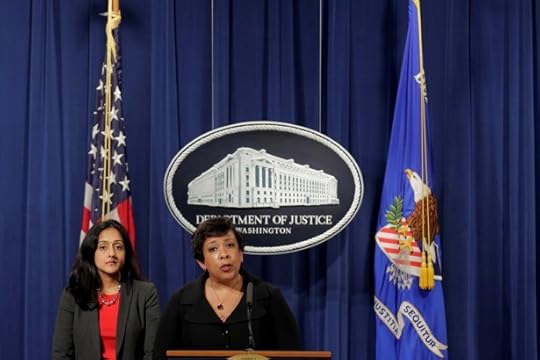
The Department of Justice has sued the state of North Carolina over HB2, the controversial “bathroom bill” enacted in March.
In impassioned remarks Monday afternoon, Attorney General Loretta Lynch blasted the law as “state-sponsored discrimination,” compared the law to segregation provisions of yore, and spoke directly to transgender people from a lectern at the Justice Department.
“This action is about a great deal more than bathrooms. This is about the dignity and the respect that we accord our fellow citizens,” she said. “It’s about the founding ideals that have led this country, haltingly but inexorably, in the direction of fairness, inclusion, and equality for all Americans.”
Related Story
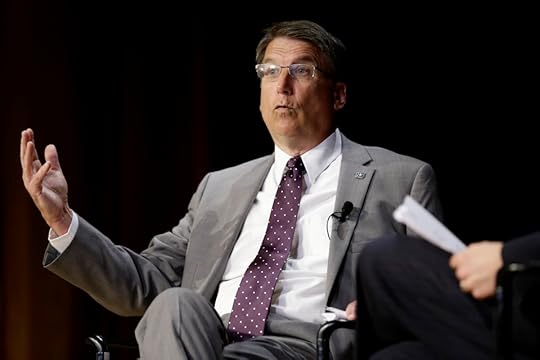
North Carolina's Suit to Keep Federal Funding After HB2
Lynch, who is a North Carolina native, placed HB2 on a continuum with state reactions against civil-rights progress, from Jim Crow to Brown v. Board of Education. She pointed out that just a few decades ago, black people were also barred from using certain bathrooms.
“Let me speak now directly to the people of the great state, the beautiful state, my home state of North Carolina,” she said. “You have been told that this law protects vulnerable populations from harm. That is just not the case. What this law does is inflict further indignity for a population that has already suffered far more than its far share. This law provides no benefit to society, and all it does is harm innocent Americans.”
DOJ’s lawsuit asks the court to declare that HB2 is discriminatory under Titles VII and Title IX of the Civil Rights Act and violates the Violence Against Women Act. The suit names the state, Governor Pat McCrory, the state Department of Public Safety, the University of North Carolina system, and its board of governors.
The remarks represent some of Lynch’s most impassioned comments since taking over the Department of Justice. She replaced Eric Holder, who as attorney general was unusually blunt and aggressive on civil-rights issues. Lynch showed on Monday that she, too, can bring fire to such issues.
“Let us learn from our history and avoid repeating the mistakes of our past,” she said. “Let us reflect on the obvious: State-sanctioned discrimination never works, and it never looks good in retrospect.”
“This law provides no benefit to society, and all it does is harm innocent Americans.”
The lawsuit is the culmination of a week of heated exchanges. Last week, Deputy Assistant Attorney General Vanita Gupta wrote to McCrory, the Department of Public Safety, and the UNC system, informing them that DOJ had determined that the law violated Title VII and Title IX, and demanding that the state reply by Monday, agreeing not to enforce the law. McCrory, a Republican, criticized the letter and asked for more time to reply. He said on Fox News Sunday that the Justice Department had offered him an extension only if he agreed that the law was discriminatory and accused the federal government of being a “bully.” On Monday, McCrory announced that the state had filed suit requesting a declaratory judgment from federal courts, asking them to rule that HB2 does not violate either the Civil Rights Act or VAWA.
A few hours later, Lynch stepped to the podium in Washington and announced the suit. Asked about McCrory’s “bully” accusation, she acidly replied that the people being bullied were transgender people in North Carolina.
The North Carolina General Assembly passed HB2 in March, during a specially convened one-day session. The law was a response to the city of Charlotte passing a local ordinance that required transgender bathroom accommodation and banned discrimination against LBGT people. HB2 bans local ordinances on both issues, and mandates that people in state facilities—including schools and universities—use bathrooms corresponding to the gender on their birth certificate, not the one with which they identify.
“Calling HB2 a bathroom bill trivializes what this is really about. HB2 translates into discrimination in the real world,” Gupta said at the press conference Monday. She added: "Transgender men are men. They live, work, and study as men. Transgender women are women. They live, work, and study as women.”
The General Assembly, which is controlled by Republicans, called its special session after McCrory—a Republican and former mayor of Charlotte—declined to do so. Once the bill was passed, however, McCrory quickly signed it—the entire process took less than 12 hours—and he has become the public face of the law nationally.
In her letter last week, Gupta informed McCrory that HB2 violated Title VII and Title IX. Although the Justice Department cannot strike down the law—a court would have to do that—the federal government can withhold billions of dollars in funding to the state for things like education, housing, and transportation if it determines that the state is unlawfully discriminating. McCrory’s lawsuit on Monday seemed intended to prevent the federal government from withdrawing those funds.
“North Carolina has long held traditions of ensuring equality,” McCrory said in a press conference Monday afternoon. “The majority of the citizens in this great state and this governor did not seek out this issue.”
Both halves of the governor’s statement are open to dispute. As Lynch pointed out, the Old North State has a long history of racial discrimination, like many states. The idea that North Carolina did not seek out the fight also earned immediate derision from HB2’s critics, who noted that the General Assembly had gone to extraordinary lengths—including the special session—to preempt Charlotte’s local ordinance, a rule that had been under debate for months.
One legal issue at stake is whether the gender identity of transgender people is covered by sexual-discrimination clauses under Titles VII and Title IX. McCrory charged that the Obama administration has attempted to write law through the executive branch. But courts have generally held that the executive branch has the right to interpret the Civil Rights Act to include transgender identity—most recently in a decision in the Fourth Circuit Court of Appeals in April. North Carolina is part of the Fourth Circuit.
“North Carolina has long held traditions of ensuring equality. The majority of the citizens in this great state and this governor did not seek out this issue.”
“This is not a question on which there is a great amount of disagreement. I think it’s highly unlikely” that a court would side with McCrory, said Shannon Gilreath, a professor of law at Wake Forest University in Winston-Salem. “What they can do is forestall the inevitable.”
Time may be just what the governor wants. McCrory spoke out against Charlotte’s ordinance before it passed, but he did not seem eager to take the issue on until legislators passed the law. (Even if he had vetoed it, Republican supermajorities might well have overridden his veto, as they have done in the past.) It has become a millstone around his neck, as entertainers boycott the state and major companies, from PayPal to Deutsche Bank, cancel or pull back expansions in the state. The NBA, which is slated to hold its 2016 All-Star Game in Charlotte, has said it will move the game unless the law is repealed.
Meanwhile, the state’s attorney general, Roy Cooper, a Democrat who is running against McCrory in November, has criticized the law, refused to defend it in lawsuits, and used it as an issue against McCrory. Although the law may energize the state’s conservative voters ahead of the election, it risks alienating moderates who elected McCrory in 2012 on the basis of his image as a business-friendly pragmatist. But time might offer an opportunity for negotiation between Charlotte leaders and state Republicans. The two sides have reportedly been in conversation about a way out in which Charlotte would repeal its ordinance and the state would alter HB2, though the likelihood and terms remains unclear.
But a declaratory judgment against the state would create an interesting impasse: Not only would the state stand to lose billions in education funding, it might also force the hand of other federal agencies, including the departments of Transportation and Housing and Urban Development, to cut off funds as well.
The state can ill afford to lose all that money. Though Gilreath pointed out that some southern states were cut off from federal funding over their refusal to desegregate, the expanded federal role in issues like education means that losing Department of Education funds could cripple the state’s troubled, once-treasured university system, which has already seen its budget slashed by the General Assembly in recent years. The UNC system is not a plaintiff in McCrory’s suit, though it is a defendant in the Justice Department’s. Lynch noted that the UNC Board of Governors is set to meet Tuesday, and she repeatedly mentioned ongoing conversations with UNC, compared with what she portrayed as intransigence from the governor’s office.
The suit filed Monday isn’t the first time the Justice Department’s Civil Rights Division has tangled with McCrory and the state. In 2013, Republicans passed a strict new voting law. The Justice Department, along with a coalition of other groups including the North Carolina NAACP, sued the state over the law, alleging it was an attempt to suppress the black vote—another case where the historical legacy of Jim Crow loomed large. Last month, a judge in the same district where Monday’s suit was filed ruled against the plaintiffs, finding the law did not single out minority voters. The Justice Department appealed that ruling on Friday. Three days later, the department was back with another suit against the state.
North Carolina DOJ HB2 Complaint (PDF)
North Carolina DOJ HB2 Complaint (Text)

Bald Eagle, Meet the American Bison
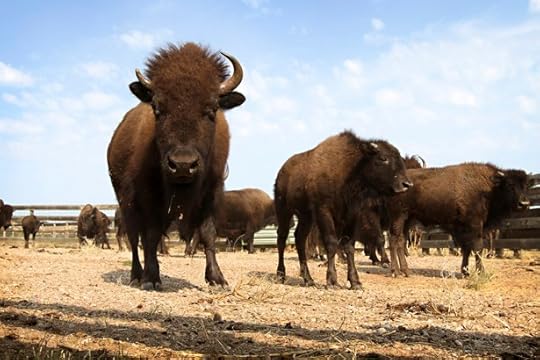
President Obama signed the National Bison Legacy Act on Monday, making the country’s official national mammal the American bison, also known colloquially as the buffalo.
The bison joins the ranks of the bald eagle, which serves as the country’s national bird. Congress approved the bipartisan bison legislation last month. The U.S. Department of the Interior recalled Monday the bison’s tumultuous experience once the Europeans arrived on the continent:
In prehistoric times, millions of bison roamed North America—from the forests of Alaska and the grasslands of Mexico to Nevada’s Great Basin and the eastern Appalachian Mountains. But by the late 1800s, there were only a few hundred bison left in the United States after European settlers pushed west, reducing the animal’s habitat and hunting the bison to near extinction. Had it not been for a few private individuals working with tribes, states and the Interior Department, the bison would be extinct today.
Native Americans had long traveled beside the herds, using their meat, hide, and horns to survive. When European and American trappers started to travel west, they killed the animal for its fur. Bison hunting intensified in the 1860s, as railroads tied east to west and allowed people to reach once-desolate lands more easily. It brought people like William Cody, a U.S. Cavalry scout who earned the nickname “Buffalo Bill” for killing 5,000 bison in just 18 months. At one point, the U.S. military killed any bison it encountered, assuming that if the animals were eradicated, so too would be the Native Americans.
Today, there are 500,000 bison in the U.S., and about 10,000 of those live on public land and are overseen by the Department of the Interior. They roam in 17 herds in 12 states. Yellowstone National Park, the only place in the country where bison have lived continually, is home to the largest herd.

The Legal Controversy Over Florida's Death Penalty

A Florida judge has ruled the state’s death-penalty statue is unconstitutional, two months after the law was amended in accordance with a U.S. Supreme Court decision this year that found it violated the Constitution.
In March, Florida introduced a new capital-sentencing system in response to a Supreme Court decision in January that determined the current rules violated the Sixth Amendment’s guarantee of a jury trial. In most states, a jury must make a unanimous decision to determine whether a death sentence is appropriate for an individual who is found guilty of a capital offense. In Florida, the jury played an advisory role, able only to offer a recommended sentence. The actual sentence would come from the judge in the case, who would independently weigh the evidence.
Florida’s new law requires that at least 10 of 12 jury members agree on a death sentence. On Monday, a circuit court judge in Miami-Dade, Milton Hirsch, said in a ruling that the statute still misses the mark, and urged that unanimity be required to sentence someone to die:
We ask only that such decisions reflect the will of the many rather than the will of the few. But for the ultimate decisions made within the judicial branch of government—guilty or not guilty, life or death—majority rule is insufficient. We do ask, indeed we insist, that the decision of capital juries be, in some sense, perfect; for they are, in some sense, final. We ask, indeed we insist, that they reflect the will of all rather than the will of the few or even of the many. Only when the jury agrees to its verdict unanimously can we demand that society accept the verdict unanimously.
In his ruling, Hirsch cited Andrew Cohen’s April 2014 article in The Atlantic on Louisiana’s non-unanimous jury verdicts in murder trials. He issued the ruling in the case of Karon Gaiter, who is awaiting trial for first-degree murder, according to the AP.
Except for Alabama and Delaware, all 33 states that have the death penalty require a unanimous jury verdict to impose the death sentence. In those two states, judges can override juries’ recommendations against a death sentence.

Picking Sides in Captain America: Civil War
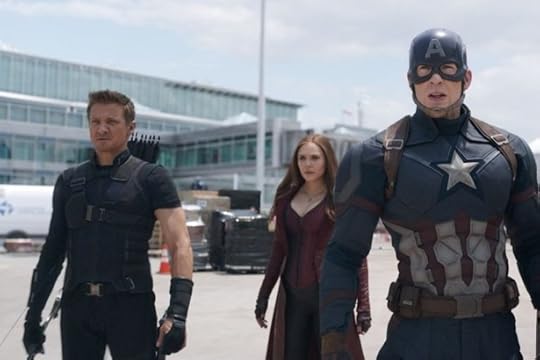
Captain America: Civil War is here—an ambitious, sprawling epic featuring a dozen superheroes doing battle over the question of whether the United Nations should start regulating their activities. The latest entry in the Marvel Cinematic Universe is ostensibly the third Captain America movie, following that hero’s resistance to the “Sokovia Accords,” which would keep his Avengers beholden to UN interests. On the other side is Tony Stark/Iron Man, who’s racked with guilt over the destruction his superhero battles have wrought across the world and seeking to make amends.
The Atlantic’s film critic, Christopher Orr, gave Civil War a positive review on Friday. Now that the film is in theaters and earning the typical Marvel big bucks, Ta-Nehisi Coates, David Sims, Gillian White, and Matt Thompson dig into the wider political implications of its story, the deftness with which it introduces new characters like Spider-Man and Black Panther, and the film’s real-world parallels. Viewers who haven’t made it to the theaters yet, beware: Spoilers abound.
Ta-Nehisi Coates: OK. I thought it was a really, really good movie. I think people need to be aware of how easy it would be to screw up a movie like this. How many heroes are in this thing? It would be so easy to just have this be a mash of spider-webs and vibranium claws. (You know what I mean!) But it actually worked. Nothing felt forced, everyone came in when they were needed, and for the most part, everyone got an arc. I think the movie benefited a lot from being able assume people were familiar with some of the cast. There was no need for (yet another) spider bite for instance. The movie didn't try to establish Black Panther's origins. And you don't really worry about those origins because, I think, in this film and in the entire series, the Universe has been so well set up.
One other thing—this was the rare story that actually improved in the third act. I thought the unwillingness to heal wounds, indeed to salt them just when those wounds seemed to be healing, was brave, and really well done.
David Sims: I think the biggest strength of the Marvel style is the confidence with which it introduces new characters. Black Panther and Spider-Man don’t need elaborate origin arcs because we’re already so used to this living, breathing world of superheroes: It’s their motivations and how they relate to the specific story that the audience is into. I liked that we started with very clear battle lines (Cap vs. Tony, collaboration vs. vigilantism) and then Black Panther occupied murkier independent territory between them. I loved that the ideal of Spider-Man—the “with great power comes great responsibility” line, which he didn’t even need to say—could represent the best version of what Iron Man was aiming for, without feeling diametrically opposed to Cap.
It’s hard to shake how much setup these movies need, though, just because of the sheer number of characters they’re throwing into the mix. For me, Civil War didn’t really kick off until at least an hour in—around when Spider-Man showed up for the first time—because there was so much story groundwork to lay out. It’s probably why the movie juggles its ensemble so well, because it takes such care in having every hero pick a side for plausible reasons before having them attack each other. And unlike some recent superhero films (cough, Batman v Superman), it keeps things comic-book light, a specific tone these Marvel movies have always hit when so many of their rivals can’t.
It’s not straight-up goofy, it’s almost like watching pro athletes jaw at each other, delighting in deflating each other’s egos—until things get all serious. I liked that there wasn’t a simple resolution, which would have felt cheap after all this build-up. But I also kinda hated it. Cap and Iron Man shouldn’t just shake hands and agree to be friends again after all that, but I couldn’t shake the sense of “watch this space!” as they parted ways. The Empire Strikes Back nailed the bitter, open-ended ending Civil War was obviously going for, but that was only setting up one more Star Wars movie. This is setting up 10 more sequels. Civil War dug into a lot of deep superhero questions I want answered, but I was hoping at the end for a complete story arc for any of its lead characters. For Cap and Tony, not so much—if anything, Black Panther came closest.
Gillian B. White: I’m in firm agreement on the balance between giving viewers enough setup to enjoyably follow the storyline but not rehashing everything. I think I would’ve started crying in the theater if we’d walked through the Spider-Man origin story for the millionth time. But I also loved how characters were in on the joke, wondering out loud who some of the new entrants were.
I kind of hated the clear-cut moral lines when it came to picking superhero teams, so it was gratifying to see some greyer areas show up later (thanks Black Widow). But I also didn’t love the ending. At all. It was very, “Don’t worry we’re all still friends when it comes down to it.” I feel like you can’t get away with that after all the open-wound-salt-pouring action that just happened. Not to mention the nearly killing each other! I wanted it to end on a slightly more antagonistic note between the main rivals so we don’t know how, or if, they’ll be able to reconcile, and are left wondering if this really is the end of the Avengers.
But while we’re on the subject of what will become of the Avengers, I’m interested to hear what you guys thought about the idea of them having to register—the argument that kicked off the split in the first place. I thought the idea was pretty compelling, both within the framework of the movie and within the larger context of who gets to decide which causes are worth fighting for. Captain America kind of sold me with his argument that registering, even to a body like the United Nations, means that they would always be beholden to someone else’s political agenda and biases.
Coates: What side did folks come down on? In my heart I was #TeamCap but in my head I was #TeamTony. It’s been said before, but the idea that these guys should register isn’t actually that absurd. Indeed, there’s something almost tyrannical in the notion that they should be the deciders of what conflict to disrupt, devoid of any democratic oversight. Steve’s distrust of politicians is also a distrust of the people who elected them.
And yet my heart was still with him. Part of it was the fact that it was governmental oversight that had failed. When New York and Washington were nearly leveled, it was SHIELD that had authority over the Avengers. So it wasn’t clear that oversight would prevent any of this. I also think Bucky exerted a strong pull on me. His story-line—being reprogrammed, put to sleep, and reawakened to kill people—just got me going. Anyone who loves that character must read Ed Brubaker’s Captain America arc, which transformed Bucky into the Winter Soldier.
Sims: Agreed on the Brubaker arc, which felt so revolutionary on its release (just in its chutzpah in reviving a character who had been dead for decades, and doing it with such skill). Civil War should hinge on Bucky, because he represents everything that’s important and perhaps unattainable for Captain America: a belief that everyone’s inherent good can be rehabilitated, in the importance of personal connection and trust, that if we all sit down together we can come to the right conclusion. I liked what he said early in the film about agendas, that organizations like SHIELD and the UN can have them and thus corrupt the heroes working for them. That happened in The Avengers (SHIELD fired a freaking nuke at New York City), and especially in The Winter Soldier. But Cap’s position also felt a little hopelessly naive. How can the world, so acquainted with Bucky’s actions as the Winter Soldier, possibly accept him as a hero? How can Cap expect Iron Man to forgive and forget? Doesn’t Cap himself suffer from an agenda—his understandable weakness for Bucky—which causes just as much harm as good in the end? I, too, went into the movie figuring I’d be #TeamCap, especially since the logistics of the Sokovia Accords don’t make a ton of sense. But I appreciated that Civil War made it hard to rationalize his actions.
There’s a larger meta-question that the film is asking too, one that Vision poses during the initial debate over the Accords. If superheroes announce their existence to the world, they’ll quickly be challenged by villains of equal might, be they from this world or another: The Avengers’ very existence “invites challenge,” as Vision put it. You can’t have a Marvel Cinematic Universe this epic without the stakes being equally epic, and that means cities, planets, even galaxies will be under threat, and civilians will be in the way of these epic battles. Civil War is responding to the chaos of the previous movies, especially Age of Ultron (where multiple cities were torn apart) and trying to hold its heroes accountable. But it’s kind of an impossible challenge: If you’re going to have superheroes, things are going to get messy. It’s easy to understand Tony’s efforts to control things, but as a viewer, you know he can’t succeed.
White: Ugh. Bucky. I would more easily align myself with #TeamCap if it weren’t for this never-ending Bucky-saving crusade. I get it, I do. Best friends, presumed death, they did horrible things to him, he became a killer against his will. Guys, I totally hear you on what Bucky represents for Captain America, and in a larger context, but after several other iterations of the Bucky plotline I grew weary this movie. When he asked whether or not he was worth it, my initial response was, “I don’t know, man.” Is that just me? Am I too dark and cynical? In any case I was happy when they put him back to sleep so we could all focus on other things.
Coates: Gillian, I don’t think we can speak again. I don’t know how to communicate with people who hate Bucky. Here are some other things that people like you hate. Kittens. Rainbows. Babies.
White: For the record, I love kittens and babies. But rainbows may be overrated in the age of Instagram.
Matt Thompson: I agree with much of what’s been said here. I thought Civil War was a very well-executed superhero movie, and especially commendable for being lucid and cohesive despite the dozens of moving sub-plots and backstories. It was a directorial feat, and the acting, on the whole, met the challenge. The movie was especially excellent at the crescendo into those last few battles, layering on the feeling of, “No one wants to be here, this might be the worst of bad options, but this is where we are, so let’s do this.” Special praise to Scarlett Johansson for that: She played that gentle, grudging resignation, world-weariness, and internal tumult so well across multiple scenes that came with very different demands—the fog-of-war set pieces, the brief conversation with T’Challa at the UN, the parting shots at the airfield.
Where the film fails for me is in the storyline that drove this putative conflict—the relationship between Cap, Bucky, and the “villain,” Zemo. Not only was I fully #TeamTony, but both my head and my heart were there for Tony in a way that they just weren’t for Cap, and I think that made a big part of the movie feel suspect. By that closing fight, Tony was coming to the table with at least a couple strong emotional backstories—the murder of his parents and his separation from Pepper Potts, plus the (effective!) bit of heartstring-tugging from a grieving mother played gorgeously by Alfre Woodard. And even if Tony’s emotional motives had totally subsumed his rational case for restraint and submission by the ending, that case still held up: The Avengers had, after all, just destroyed an airport largely for matters of personal pique.
I have a hard time relating to Cap—stoic, righteous, beautiful Steve Rogers—in the best of circumstances, and he was at his most stoic and righteous and beautiful and unrelatable for me in this film. To believe he’d go as far as he goes for Bucky in this movie, you have to believe he loves Bucky, with all the ugliness and vulnerability and passion that love would bring. I never did. The briefest of moments between, say, Hawkeye and Black Widow, or between T’Challa and his father, heck, even between Tony and an absent Pepper, seemed more genuine and affecting than any equivalent moments between Cap and the Winter Soldier. This wouldn’t be a big problem except that the film’s ultimate conflict relies on some equivalence in the dueling emotional arcs—the rational dispute about the Sokovia Accords is mostly moot by the movie’s third act. By the time Tony and Cap and Bucky were all fighting, a moment when I wanted the emotional tug of a man avenging his parents’ death weighing against the tug of a man defending his best friend’s life, all I kept thinking was, “Wait, what are they fighting about again? And why isn’t anyone worrying about Zemo?”
Coates: I get why it’s hard to relate to Cap—or why people think it’s hard to relate to Cap. The basic idea is that he is, as you say, stoic, righteous, and beautiful. But here is the real beauty of Captain America—he’s living in an era where all of that seems in question, in a way that it didn’t during World War II. Captain America is, perhaps above all, a man out of time. He’s trying—and arguably in this case—failing to maintain these pure values in a world of nuance and complication. Fraternity bonds him to Bucky. But that fraternity conflicts with the facts of what Bucky has actually done, brainwashed or whatever. I’ve always thought that Cap, at his best, was a kind of comment on how we see World War II, “The Good War.” He’s a cartoon pulled out of our own imagined past, set in an uncomfortable, uncertain present.

France’s New De-Radicalization Centers
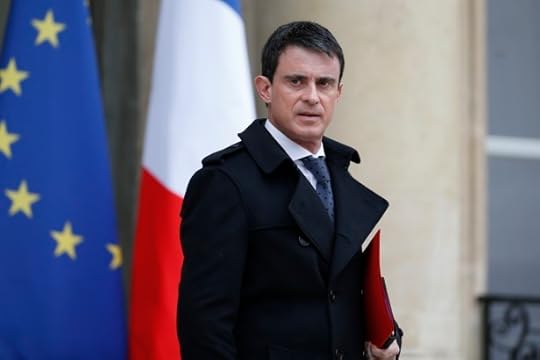
Prime Minister Manuel Valls said Monday France would open a dozen de-radicalization centers meant to identify people at risk of joining jihadi groups and prevent them from further radicalization.
Valls called the fight against jihad “undoubtedly the big challenge of our generation,” as he released an 80-point plan meant to fight terrorist networks inside his country. It will cost $45.5 million and last two years. The Guardian reported the centers will:
... house young people who “could have repented and who we will test the sincerity and willingness to be reintegrated back into society for the long term”, Valls said.
He said the aim of the centres would be to stem the flow of young people to Syria and Iraq and begin the process of deradicalising them.
At least half of the new centres will hold those deemed by a judge to be at risk of radicalisation but cannot be placed in detention, Valls added.
France estimates there are more than 9,000 radicalised people or would-be jihadis in its midst. About 2,000 French nationals or residents are believed to have travelled to Syria and Iraq to fight with Islamic State.
France has already experimented with ways to detect people at risk of joining jihadi groups. In 2014 it set up a phone line for the public to report terrorism suspects. That line will be extended as part of this new plan, which will also tighten security at nuclear plants and busy public transportation sites. The plan will grant more money to France’s intelligence services and establish a research committee to understand why people radicalize.
Last year’s attacks on Charlie Hebdo and multiple locations in Paris, which together killed more than 140 people, were carried out by French citizens who’d become radicalized. The new centers will be run by France’s Inter-Ministerial Committee for the Prevention of Delinquency and Radicalization.

Chris Christie Will Start Planning the Trump Administration
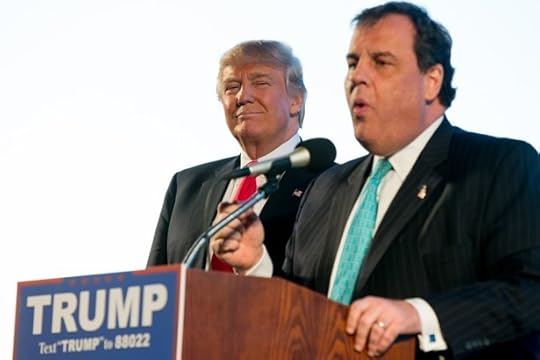
Donald Trump on Monday made perhaps the most important hire of his presidential campaign to date, choosing Chris Christie to lead his transition team if he wins the White House in November.
The announcement might seem early for a man who has been the GOP’s presumptive nominee for less than a week. But it answers the call of good-government advocates who—as I wrote last month—are urging all campaigns to begin thinking about and planning for a presidential transition months in advance. “Governor Christie is an extremely knowledgeable and loyal person with the tools and resources to put together an unparalleled Transition Team, one that will be prepared to take over the White House when we win in November,” Trump said in a statement. His campaign added that the New Jersey governor would be “overseeing an extensive team of professionals preparing to take over the White House, and all that entails.”
The choice of Christie is not a surprise given that he has been one of Trump’s most enthusiastic and high-profile surrogates since endorsing after he ended his own presidential campaign earlier this year. Yet his selection also raises a couple of key questions: Will Christie continue to be an active member of Trump’s campaign as he begins to plan his transition? And could Trump still also pick him as his vice presidential nominee?
If Christie is truly heading Trump’s day-to-day transition effort, the answer to both questions has to be no, said Max Stier, who is chairman of the Partnership for Public Service and has been advising the campaigns on transition planning. “If Christie is going to really run the transition process, he can’t effectively be active in the campaign or be himself a candidate because it’s a full-time job,” Stier said. In 2012, Mitt Romney tapped former Utah Governor Mike Leavitt to run his transition, and Leavitt kept his distance from the campaign while building out what he called a 600-person “government in miniature.” It’s not clear if Trump plans a similar operation. If Christie’s role atop the transition team was more ceremonial, it might be possible for him to split time with the campaign, to stay in contention to be Trump’s running mate—or even to do the job he was elected to perform, governing the state of New Jersey.
The announcement came just a few days after The New York Times reported that Trump had asked his son-in-law, Jared Kushner, to head up the transition efforts. Kushner was not mentioned in the press release announcing Christie’s new job. If Monday was an early indication, Christie seems to be operating pretty independently from the campaign: A Trump spokeswoman directed questions about his role to Christie’s gubernatorial office, which promptly referred those queries back to Trump’s campaign.
Hillary Clinton, the likely Democratic nominee, has not publicly announced a transition chief. And the fact that Trump made his own announcement so quickly is at least a momentary relief to those who wondered how seriously he would take the process. “First and foremost, it is really important that Trump has publicly named a transition chairman,” Stier said. “Trump is demonstrating his understanding that he needs to prepare for the possibility that he will be governing at the same time as he is trying to win the campaign.”

Uber and Lyft Say Goodbye (For Now) to Austin
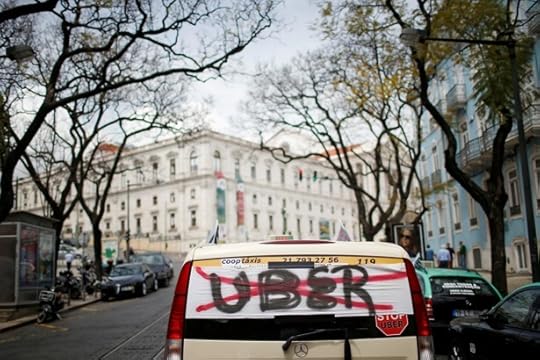
The ride-sharing companies Uber and Lyft said Monday they’d stop service in Austin, Texas, because voters rejected a proposal that would have loosened regulations on the two companies.
Last year, Austin’s City Council approved a proposition that would hold Uber and Lyft to similar standards as cab companies, including fingerprinted background checks for drivers. Both companies supported a new proposal that would have annulled those stricter regulations, but on Saturday, 56 percent of voters turned it down. On Monday, the Austin American-Statesman reported that Austin woke up to:
People with the Uber app got the following message when they tried to request a ride Monday morning: “No pickups as of May 9th. Uber not currently available in Austin. Due to regulations passed by City Council, Uber is no longer available within Austin city limits. We hope to resume operations under modern ridesharing regulations in the near future.” Below that message is a “contact City Council” link, which directs users to theCity Council’s contact page that allows people to email all council members.
Lyft users got this message: “Due to City Council action, Lyft cannot operate in Austin. Contact your City Council member now to tell them you want Lyft.” Below the message is a “let them know” button
Ride-sharing services and the cab industry have battled in cities across the U.S., and the world, because they rely on the same customer base. The larger complaint by the cab industry is that it must comply with city regulations, while the app-based companies are self-monitored. Even issues such as background checks have proven contentious. That was the focus of a lawsuit last year in California, when19 cab companies sued Uber because the app advertises itself as “the safest rides on the road." Taxi companies said that wasn’t true, because its drivers underwent more strict background checks, like fingerprinting.
In Austin, Uber and Lyft spent $8 million to support the new proposition, which comes to about $200 a vote. And while they have stopped their service, the Statesman reported the ride-hailing app GetMe is still operating in the city.

Atlantic Monthly Contributors's Blog
- Atlantic Monthly Contributors's profile
- 1 follower



